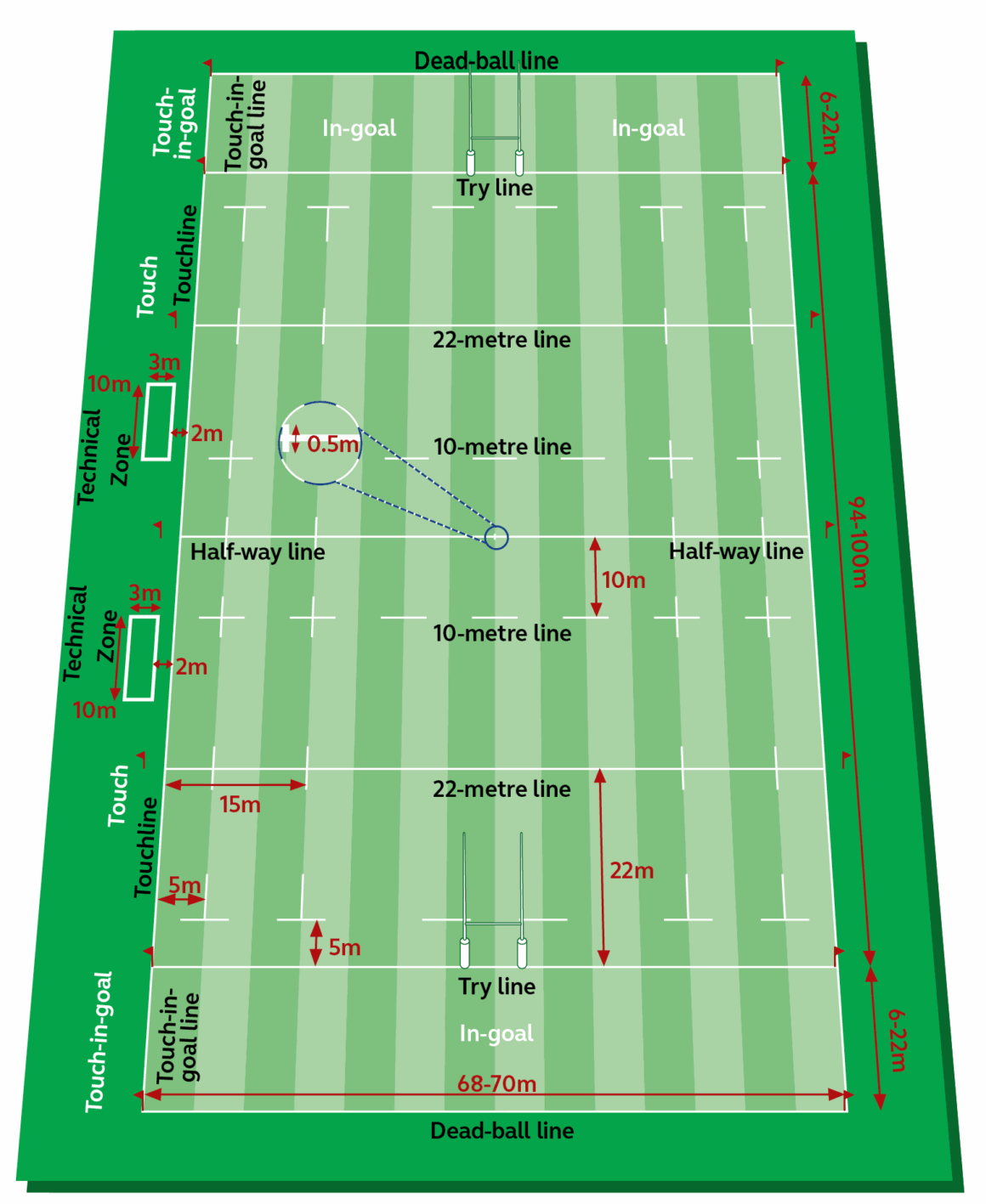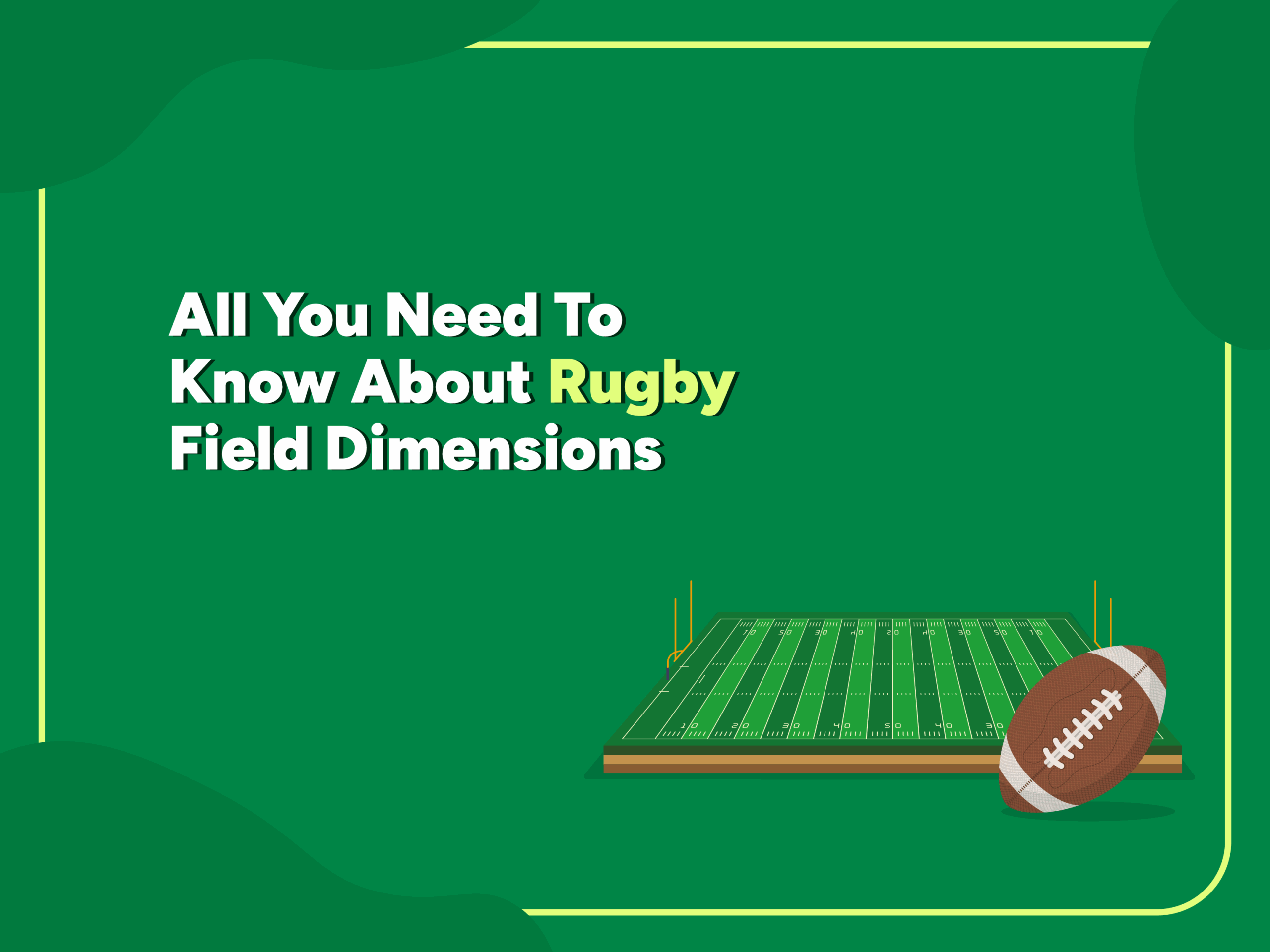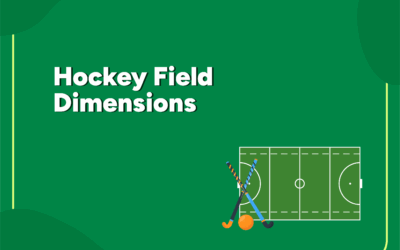Ever watched a rugby match and thought, “Wow, this field looks massive!”? You’re not wrong. Rugby is a contact sport which originated in England and is played between two teams of 15 players. It is played on one of the largest fields in sport, and every line you see actually has a purpose. From the halfway mark to those mysterious 22-metre lines, each marking helps shape how the game flows.
The good news? Once you break it down, the rugby pitch is easier to understand than it looks. Let’s walk through the field step by step.
Rugby Field Dimensions: How Big is the Pitch?

A rugby pitch isn’t one fixed size. It comes with a bit of flexibility. But all fields stay within World Rugby’s official range:
- Length (try line to try line): 94–100 metres
- Width: 68–70 metres
- In-goal area (where tries are scored): 6–22 metres deep
That means the total length of the field (including in-goals) can stretch anywhere from 106 metres to 144 metres. That’s longer than one and a half football (soccer) pitches!
The Lines You See on a Rugby Pitch
At first glance, the pitch can look confusing, but here’s a simple breakdown (check the diagram above for a visual):
Main Lines
- Halfway line: Where the match kicks off and restarts.
- 10-metre lines: The ball should travel at least 10 metres ahead in kick-offs.
- 22-metre lines: Marked 22m in front of each try line and are used in kicking tactics.
- Try lines (goal lines): Cross them and touch the ground to score a try.
- Dead-ball lines: The absolute end of the field, behind the in-goal zone.
Side Lines
- Touchlines: The long boundaries on each side. Step over = ball out.
- 5-metre lines: Used for scrums and lineouts.
- 15-metre lines: Help with spacing during lineouts.
So, all those markings aren’t random, but they guide play and keep the game structured.
Goalposts and Flags
Rugby posts are tall and H-shaped—pretty hard to miss!
- Crossbar: 3 metres off the ground
- Distance between uprights: 5.6 metres
- Height: Usually around 16–17 metres (no official max)
Flags also play a role: they’re at least 1.2 metres tall and mark the corners, the 22-metre lines, and the halfway line (just outside the field).
The Playing Surface
Traditionally, rugby is played on natural grass (mud and all!). But approved artificial turf is also allowed. For safety, there should be at least a 5-metre buffer zone outside the touchlines so players don’t crash into benches, fences, or fans.
Why the Dimensions Matter
The size of the field actually shapes how rugby is played:
- Bigger in-goal areas make it easier to score tries.
- Wider areas permit more open, running rugby.
- The 22-metre line is crucial to tactical kicking.
- Scrum and lineout lines maintain set-pieces in order.
Each line and measurement makes rugby the ordered but flowing sport we know today.
Final Whistle
So now you understand the rugby pitch is more than just a large green rectangle. All the markings, metres, and posts contribute to the way the game is played. So next time you watch a game, you’ll not only be enjoying the tackles and tries but also how the very field itself makes rugby what it is, a special and thrilling sport.
Want more sports blogs like this? Check them out here!
Frequently Asked Questions
A full-sized rugby field is up to 100 meters (328 feet) in length for the playing surface, plus two in-goal areas that are 10–22 meters wide each. The field is also approximately 70 meters (230 feet) wide.
2. What are the rugby field dimensions in feet?
In feet, the rugby field is approximately 328 feet by 230 feet long. The in-goal lines extend an additional 33–72 feet each past the try line, depending on the stadium.
3. What are rugby pitch markings?
The pitch contains a number of significant markings:
– Halfway line (centre of the field)
– 22-meter lines (crucial for kicks and restart plays)
– 10-meter line (for rules of kick-off)
– 5-meter and 15-meter lines (for scrums, lineouts, and setup)
– Try line (where you score)
– Dead-ball line (edge of the in-goal area)





0 Comments